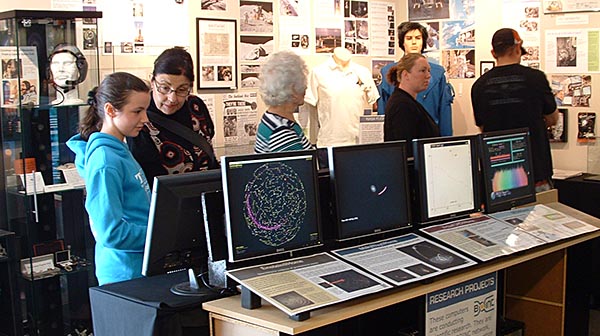


In 2009, deployed multi-threaded CPU applications for the first time, followed by the first OpenCL application in 2010.Īs of 15 August 2022, there are 33 projects on the official list. The first BOINC-based project was launched on June 9, 2004. The BOINC project started in February 2002, and its first version was released on April 10, 2002. BOINC was designed, in part, to combat these security breaches. As a result, some participants in the project attempted to cheat the project to gain "credits", while others submitted entirely falsified work.
Boinc projects software#
The original SETI client was a non-BOINC software exclusively for It was one of the first volunteer computing projects, and not designed with a high level of security.
Boinc projects license#
BOINC is free software released under the terms of the GNU Lesser General Public License (LGPL).īOINC was originally developed to manage the project.
Boinc projects code#
īOINC code runs on various operating systems, including Microsoft Windows, macOS, Android, Linux, and FreeBSD. Guinness World Records ranks BOINC as the largest computing grid in the world. The National Science Foundation (NSF) funds BOINC through awards SCI/0221529, SCI/0438443 and SCI/0721124. Anderson, who also led As a high-performance volunteer computing platform, BOINC brings together 34,236 active participants employing 136,341 active computers (hosts) worldwide, processing daily on average 20.164 PetaFLOPS as of 16 November 2021 (it would be the 21st largest processing capability in the world compared with an individual supercomputer). The purpose of BOINC is to enable researchers to utilize processing resources of personal computers and other devices around the world.īOINC development began with a group based at the Space Sciences Laboratory (SSL) at the University of California, Berkeley, and led by David P. Developed originally to support it became the platform for many other applications in areas as diverse as medicine, molecular biology, mathematics, linguistics, climatology, environmental science, and astrophysics, among others. More than 750 volunteers from several countries across the globe are supporting the project, in addition to the kind support that the project is receiving from XSEDE and TACC in the form of project allocations on Jetstream and Chameleon.The Berkeley Open Infrastructure for Network Computing ( BOINC, pronounced / b ɔɪ ŋ k/ – rhymes with "oink" ) is an open-source middleware system for volunteer computing (a type of distributed computing). can be extremely useful for those researchers/scholars who are running low on allocations of compute-cycles on the supercomputers, or are interested in reducing the turnaround time of their HTC jobs when the supercomputers are over-subscribed. The software infrastructure is open-source and can be easily adapted for use by other supercomputing centers that are interested in building their volunteer community and connecting them with the researchers needing multi-petascale computing power for their HTC jobs. We have also developed a web-application for TACC users so that, through the convenience of their web-browser, they can submit their HTC jobs for running on the resources volunteered by the community.

We have named the extension of the BOINC software infrastructure as and are using it to route *qualified* HTC jobs from the supercomputers at TACC to not only the typically volunteered devices but also to the cloud computing resources such as Jetstream and Chameleon. Given its potential in elastically augmenting the capacity of existing supercomputing resources for running HTC jobs, we have extended the BOINC software infrastructure and have made it amenable for integration with the supercomputing and cloud computing environments. It has already enabled projects with high societal impact to harness several PetaFLOPs of donated computing cycles. BOINC is the most popular software framework for VC and it helps in connecting the projects needing computing cycles with the volunteers interested in donating the computing cycles on their resources. Volunteer Computing (VC) is a computing model that uses donated computing cycles on the devices such as laptops, desktops, and tablets to do scientific computing. The volunteered resources include desktops, laptops, tablets, and Virtual Machines (VMs) in the cloud. It provides a conduit for routing High-Throughput Computing (HTC) jobs from the TACC systems to the computing resources volunteered by individuals or institutions. The project integrates volunteer computing with supercomputing and cloud computing.


 0 kommentar(er)
0 kommentar(er)
